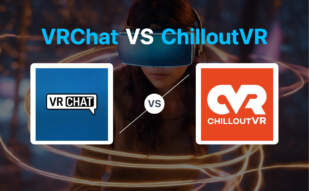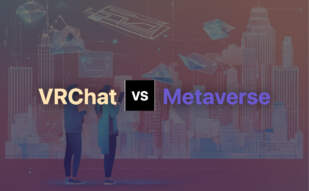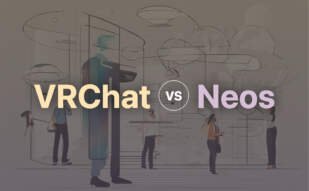If you’re a content creator seeking unparalleled avatar autonomy and an idea playground for virtual performances, soirees and more, opt for VRChat. However, if fostering a realistic virtual economy, nurturing closer communal ties & curating customised experiences matter more to you, consider Second Life.
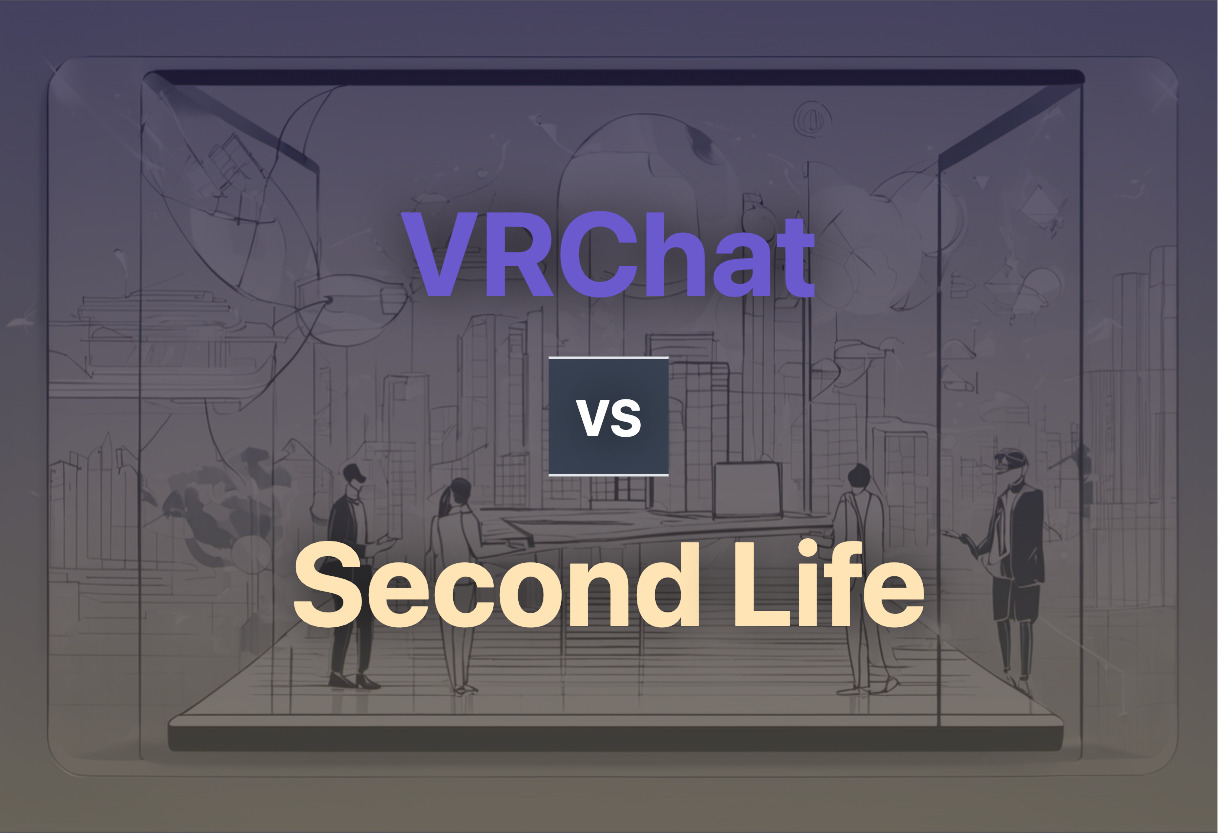
Key Differences Between VRChat and Second Life
- Coding: VRChat, powered by Unity and features a visual programming language, Udon, while Second Life relies on users for content creation.
- Avatars: VRChat offers extensive avatar customisations, while Second Life avatars have “consequences”, acting as behavior moderators.
- Gaming: VRChat is popular amongst YouTubers; its features cater to gaming and entertaining. Second Life was initially game-focused.
- Userbase: VRChat attracts gaming and tinker communities while Second Life’s user base includes children, teenagers, academics, artists and others.
| Comparison | VRChat | Second Life |
|---|---|---|
| Development | Developed by Graham Gaylor, Jesse Joudrey | Idea by Linden Lab CEO Philip Rosedale |
| Engine | Unity | Proprietary Software |
| Release Date | January 16, 2014 | June 23, 2003 |
| VR Support | Oculus Rift, Oculus Quest, HTC Vive, SteamVR | No Native Support |
| Input Methods | Desktop mode supports mouse, keyboard, gamepad | Keyboard, Mouse |
| Impact | Influential among YouTubers and Twitch streamers | Established businesses like Gucci, Ferrari have a presence |
| Audience | Large mixed audience; had 40,000 concurrent users on New Year’s Eve 2020 | Large mixed audience; tens of thousands of active users at a time |
| Privacy & Safety | Users classified into trust levels, anti-cheat system (EAC) incorporated | Identity verification, functional cookies, no personal information storage |
| Club Culture & Events | Virtual performances, dance events, live music, music-oriented communities | Shared 3D experiences, various communities, including military veterans discussing PTSD |
What Is VRChat and Who’s It For?
VRChat stands as a massive multiplayer online virtual reality platform, developed by Graham Gaylor and Jesse Joudrey and founded on January 16, 2014. Built with the power of Unity engine, this platform enables community interaction using 3D avatars in user-created worlds, mimicking lifelike characteristics including lip sync, eye-tracking, and hand motion. It is a hub for socializing and playing games, similar to ambient platforms like Second Life and Habbo Hotel, making it an enchanting choice for YouTubers, Twitch streamers, and tech-savvy enthusiasts seeking sociable experiences in virtual domains.

Pros of VRChat
- Supports a range of devices, including Android and touchscreen
- Extensive customization option for avatars
- Serves as a hub for virtual performances
- Hosts vibrant communities and regular dance music events
- VRChat Plus premium service for enhanced features
Cons of VRChat
- Controversially allows minor access to adult-themed content
- Faced review bombing due to sudden anti-cheat system incorporation
- Trust level system might pose a barrier to new users
What Is Second Life and Who’s It For?
Brought to life by Linden Lab’s CEO Philip Rosedale, Second Life is a ground-breaking online virtual world that started as the concept of a vast, connected green landscape. More than just a game, Second Life is a real-time, immersive experience that enables users to generate content, interact, trade goods and services, and craft shared experiences. With an own economy governed by Linden dollars, Second Life supports an intricate world of user-generated content, preferred by creatives like artists, academics, trans community, non-conformists, and military veterans yearning for real-world recreation in the digital sphere.

Pros of Second Life
- Capacious economic system supporting buy, sell of goods and services
- Encourages user-generated content
- Provides a platform for major brands like Gucci, Ferrari
- Behavior check mechanisms, fostering positive interactivity
- Massive diversity in user-base
Cons of Second Life
- Doesn’t support cryptocurrency transactions
- Requires setting privacy preferences for full functionality
- The user interface may seem dated compared to newer platforms
VRChat vs Second Life: Which Reigns Supreme?
In the digital battlefield of immersive experiences, who wins the war: VRChat or Second Life? Let’s break it down.
For the Developers and Creators
If technical sophistication, control, and customization are your main objectives, VRChat reigns supreme. With robust support for a slew of devices and offering user-created 3D avatars and worlds, it excels at detailed personalization. The introduction of Udon (a visual programming language) heralds elements of high-end development. However, if generating revenue through goods and services holds more appeal, then Second Life’s mature economy is hard to beat.

Virtual Sociability Seekers
VRChat promises a vibrant social experience with eventful virtual performances and a significant following among YouTubers and Twitch streamers. In contrast, Second Life, with its 3D shared experiences and consequential avatar interactions, provides moderation and fosters trust among users. If immersive, consequence-laden engagements interest you, Second Life is the choice.
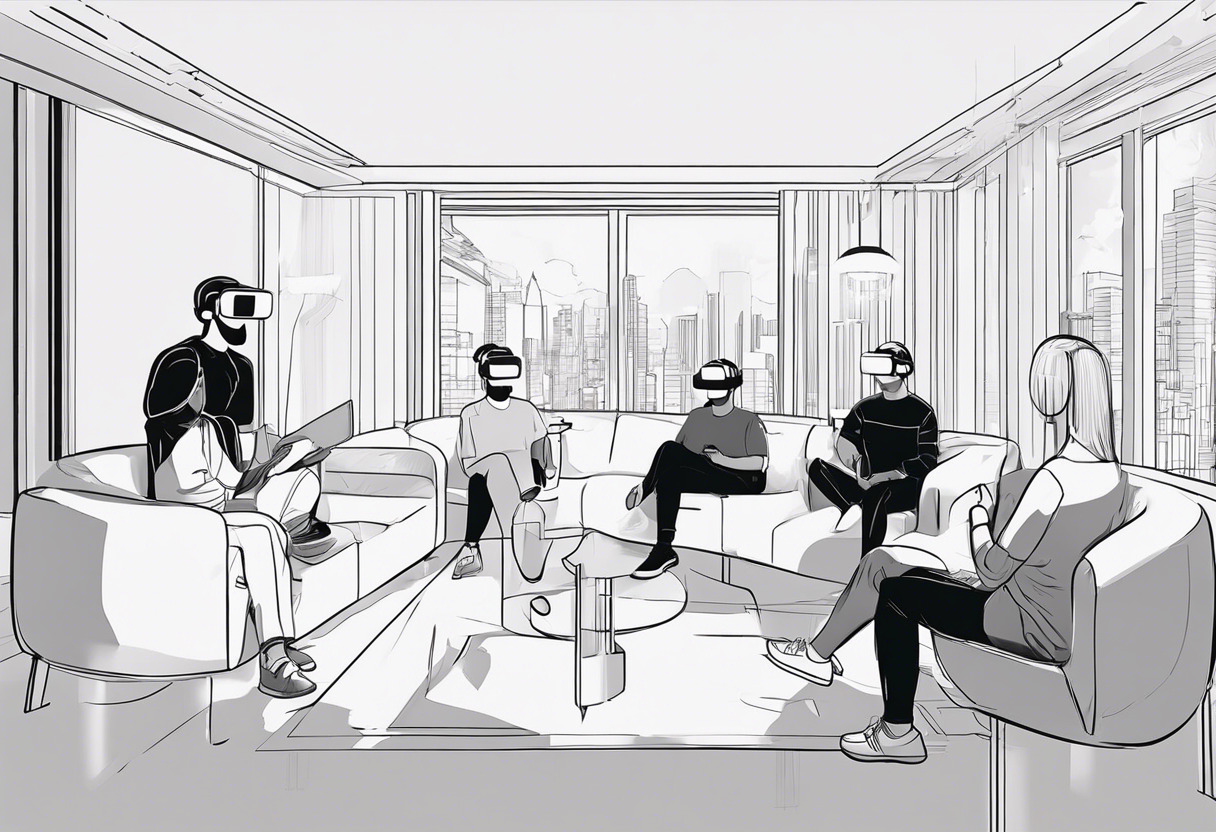
The Tech Enthusiasts and Early Adopters
Adoption of cutting-edge virtual reality devices like Oculus Rift, HTC Vive, and support for Android and touchscreen devices makes VRChat an ideal choice for tech enthusiasts. On the other hand, if you’re more of a frontier-adopter focusing on potential metaverse transactions and avoiding targeted advertising models, Second Life currently holds those advantages.

Conclusively, VRChat offers technologically-rich, creative social interactions attractive to developers and creators. Conversely, Second Life provides ponderously-real, economy-driven interactions appealing to sociability seekers and early metaverse adopters. It’s a decision predicated on priorities: Creative freedom or consequential social interactions?
Patrick Daugherty
Content writer @ Aircada. Merging AR expertise with a love for late-night gaming sessions.



